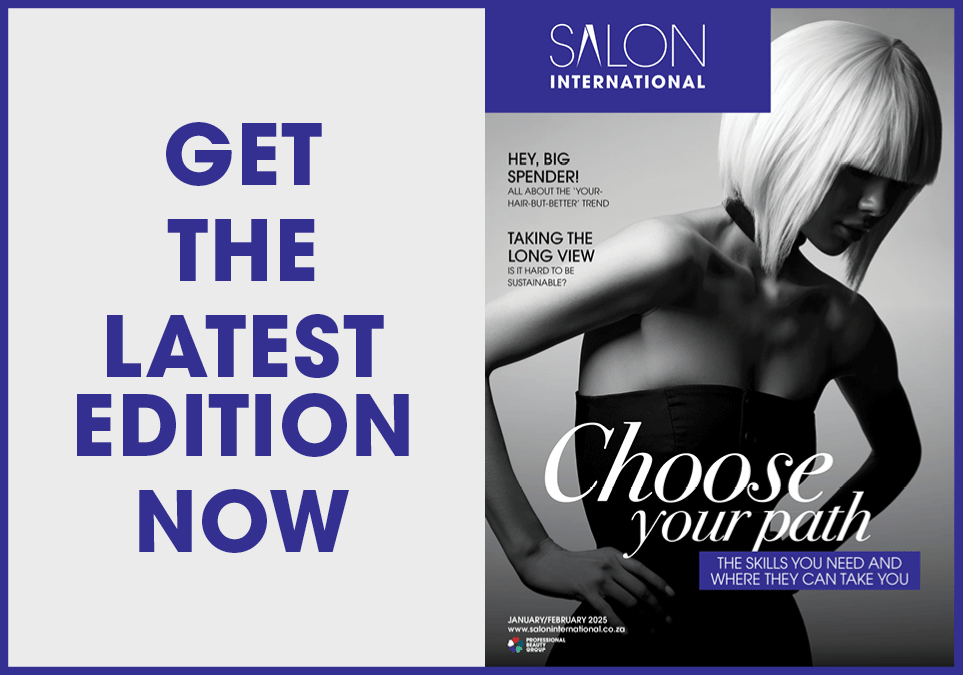
With Sunflower Blonde fast becoming one of the most requested shades in salons, we spoke to a number of colour specialists to find out more about the shift away from cool tones, and their top tips to prevent warm shades from going brassy.
What is Sunflower Blonde?
“I believe Sunflower Blonde typically refers to a vibrant, warm shade of blonde hair colour, reminiscent of the bright, golden hues of a sunflower,” explains Amber Rose, KEVIN.MURPHY Influencer. “This shade is characterised by its rich, sunny tones that range from golden yellow to honey blonde. The colour is often multidimensional, with subtle variations in light and shade that give it a natural, sun-kissed appearance.” In fact, the multidimensional appearance of Sunflower Blonde means you can easily tailor the colour placement to make the result bespoke to each client, which Gareth Williams, Moroccanoil Global Ambassador, suggests is one of the reasons this trend is so popular.
The Resurgence of Warm Blonde Hair
Warm blonde tones are not new, however in recent years, it’s the cooler, icy shades that have been most popular. However, Daisy Hawkins, Blonde Solutions Educator, suggests that one reason clients are opting for warm blonde over cool blonde is because of the ‘Old Money’ trend. “Sunflower blonde is a timeless shade,” she explains. “Hair trends are just like fashion – once something has been a trend, it always comes back around eventually.”
Meanwhile Justin Mackland, freelance hair stylist, believes that Sunflower Blonde may also have been influenced by the Copper Cowboy trend, suggesting that it’s the perfect transition shade for clients that have been embracing red tones. While these red tones proved popular in the autumn and winter months, Kat Duke, from Jack & The Wolfe, notes that warmer tones often align with seasonal changes, particularly in spring and summer when people seek brighter, sun-kissed looks.
Discussing the benefits of warm blonde versus cool blonde, Brooke Evans, owner of BE Ironbridge, explains that there’s more longevity with warmer blondes as you’re not having to tone out too much of the raw lift. She says: “It’s a tweak of the tone rather than a change of tone. We lift low and slow using anything from 3% to 6%. This gives a nice lift, but make sure you leave it on for the right amount of time to get rid of golden tones. You want warm blonde, but most clients don’t want it to be too golden.”


Another benefit of a shade like Sunflower Blonde is that it produces a less noticeable regrowth. “Warm blonde shades tend to blend better with darker roots as they grow out, making the regrowth less stark and noticeable compared to the high contrast of ashy blondes,” explains Amber. While this does mean existing colour clients may be able to space out their appointments a little more, a low-maintenance trend such as this might also appeal to clients that have not booked in for colour before, for fear of damaging their hair – helping to keep your column full. Amber also explains that another benefit of Sunflower Blonde is that it offers correction flexibility, adding: “Warm tones are easier to adjust and correct if the colour does not turn out quite as expected, whereas cool tones can be more challenging to perfect.”
How to Prevent Warm Blonde from Looking Brassy
Gareth explains that to prevent warm blonde hair from looking brassy, think about the whole colour range you have at your disposal. He notes that while he likes to use Moroccanoil Rhapsody Hi-Lift or products within the permanent range, using Calypso and Clear on the remainder of the hair helps to ensure the hair is well conditioned but also has a little detox from previous colours, water build up as well as environmental aggressors.
Amber adds that preventing warm blonde shades from going too brassy or yellow can also be achieved through a combination of proper hair care routines, using the right products and encouraging your clients to adopt mindful habits. This includes protecting hair from heat, limiting sun exposure and avoiding hard water – all of which can contribute to brassiness. It’s important to highlight this to clients, as while they may be aware these factors can compromise hair health, they might not realise they can also impact their colour.




Comments